
Caterpillars are the larval stage of members of the order Lepidoptera.
Lepidoptera is an order of insects that includes butterflies and moths. About 180,000 species of the Lepidoptera are described, in 126 families and 46 superfamilies, 10 percent of the total described species of living organisms. It is one of the most widespread and widely recognizable insect orders in the world.
Caterpillar is the second part of their four-stage life cycle (egg, larva (caterpillar), pupa, adult).
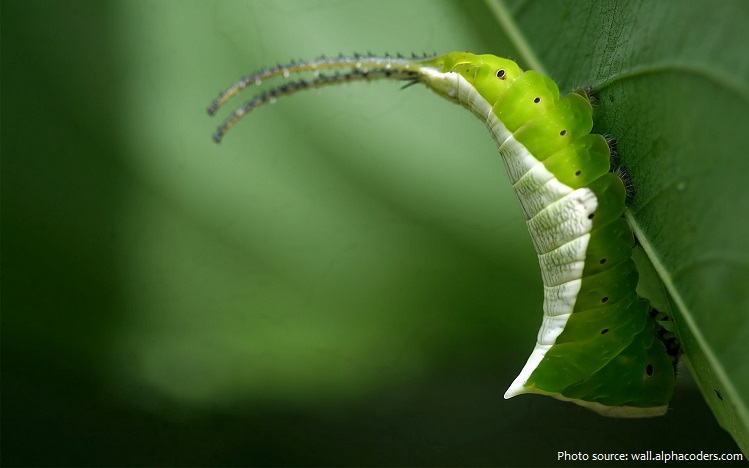
Caterpillars are found in abundant numbers in nearly all parts of the world.
Most caterpillars have cylindrical bodies consisting of multiple segments, with three pairs of true legs on the thorax and several pairs of short, fleshy prolegs on the abdomen. The head has six small eyes (stemmata) on each side that function in light detection but not in image formation. They have short segmented antennae and strong jaws.
Their size varies between species and instars (moults) from as small as 1 millimetre (0.039 in) up to 14 centimetres (5.5 in).
Caterpillars breathe through a series of tiny openings along the sides of their bodies, called “spiracles.” From each spiracle, a tube called a “trachea” carries oxygen into the body.
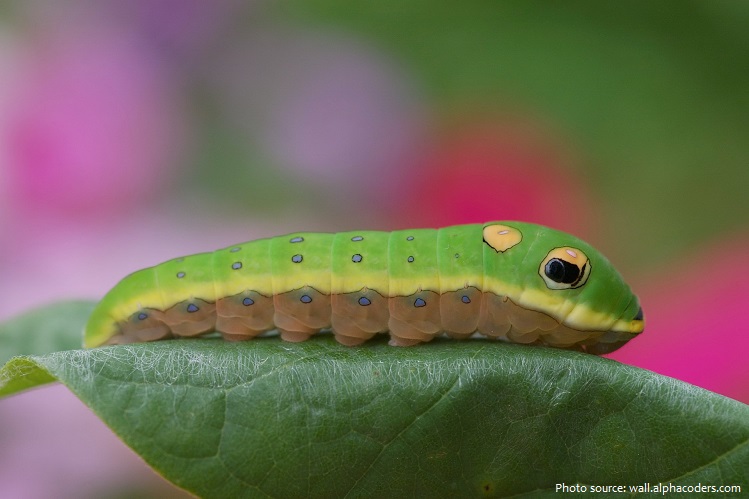
Caterpillars have about 4,000 muscles (the human being has only 629). They move through contraction of the muscles in the rear segments, pushing the blood forward into the front segments elongating the torso.
The appearance of a caterpillar can often repel a predator: its markings and certain body parts can make it seem poisonous, or bigger in size and thus threatening, or non-edible. Some types of caterpillars are indeed poisonous, others may mimic dangerous caterpillars or other animals while not being dangerous themselves.
Before it even emerges from its egg, the very first thing a caterpillar does is eat. It chews its way out of its egg, and then it typically eats the rest of the eggshell. After that, it starts devouring the plant it’s standing on.

Caterpillars have rightly been called eating machines. Their energy is devoted toward eating and growth. The caterpillar eats until it’s literally too big for its body, and then it molts, revealing a newer, roomier skin.
Caterpillars grow very quickly – for instance, a tobacco hornworm will increase its weight ten-thousandfold in less than twenty days.
A caterpillar’s transformation into a butterfly has long fascinated humans: the metamorphosis of a stubby, crawling, land-based insect into an airborne fairy is the perfect metaphor for change, improvement, escape, even life after death.
The predators of caterpillars are birds, ladybird beetles, yellow jackets and human beings. Caterpillars serve as a primary food source for numerous birds, such as the warbler species, tanagers and canopy-dwelling birds.
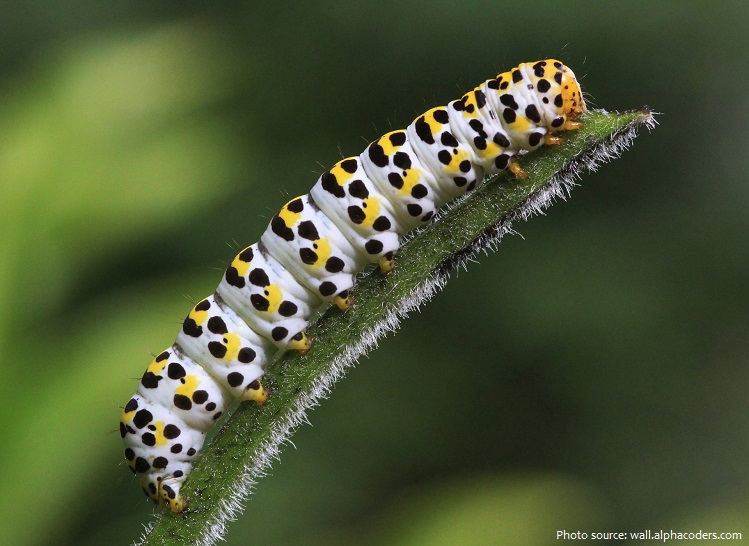
In the Old Testament of the Bible caterpillars are feared as pest that devour crops.
Silk is produced by several insects, but generally only the silk of moth caterpillars has been used for textile manufacturing.
A 2004 survey by the United Nations Food and Agriculture Organization found that 90 percent of people in some African countries eat moth and butterfly caterpillars.
The origins of the word “caterpillar” date from the early 16th century. They derive from Middle English catirpel, catirpeller, probably an alteration of Old North French catepelose – cate meaning cat (from Latin cattus) and pelose meaning hairy (from Latin pilōsus).
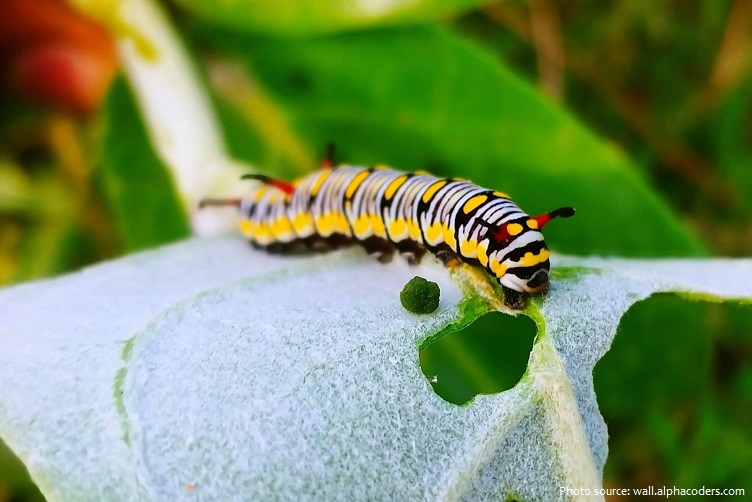
The inchworm, or looper caterpillars from the family Geometridae are so named because of the way they move, appearing to measure the earth (the word geometrid means earth-measurer in Greek) – the primary reason for this unusual locomotion is the elimination of nearly all the prolegs except the clasper on the terminal segment.
In Lewis Carroll’s Alice’s Adventures in Wonderland a caterpillar asks Alice “Who are you?”. When Alice comments on the caterpillar’s inevitable transformation into a butterfly, the caterpillar champions the position that in spite of changes it is still possible to know something, and that Alice is the same Alice at the beginning and end of a considerable interval. When the Caterpillar asks Alice to clarify a point, the child replies “I’m afraid I can’t put it more clearly… for I can’t but understand it myself, to begin with, and being so many different sizes in a day is very confusing”. Here Carroll satirizes René Descartes, the founder of Cartesian philosophy, and his theory on innate ideas. Descartes argued that we are distracted by urgent bodily stimuli that swamp the human mind in childhood. Descartes also theorised that inherited preconceived opinions obstruct the human perception of the truth.
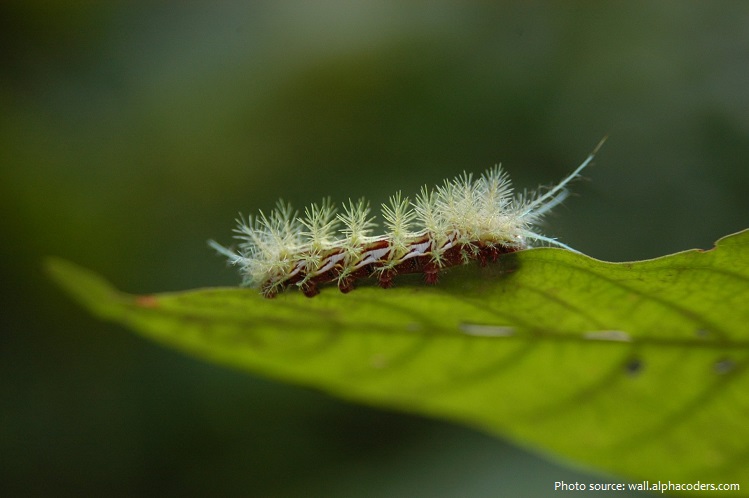
Some caterpillars obtain protection by associating themselves with ants. The Lycaenid butterflies are particularly well known for this. They communicate with their ant protectors by vibrations as well as
chemical means and typically provide food rewards.
Caterpillars are easy to catch because of their slow movement and attractive, bright colors.
Some larvae of the order Hymenoptera (ants, bees, and wasps) can appear like the caterpillars of the Lepidoptera.